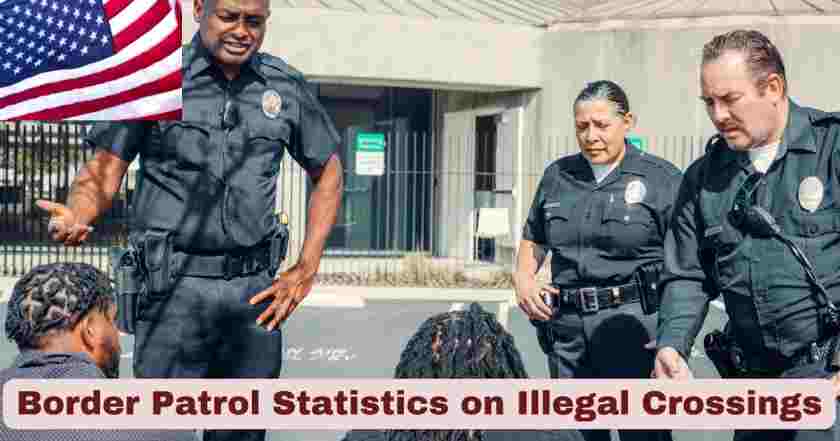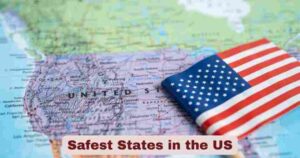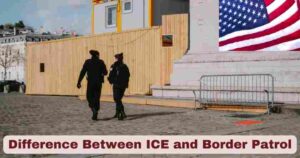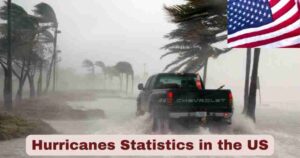Border Patrol Statistics on Illegal Crossings 2025
The U.S. Border Patrol has documented unprecedented changes in illegal border crossings throughout 2025, with southwest border apprehensions reaching historic lows not seen in decades. U.S. Customs and Border Protection (CBP) reports that July 2025 marked another record-breaking month with the most secure border in history, achieving only 4,598 southwest border apprehensions – nearly 500 fewer than June’s previous record low. These dramatic reductions reflect significant policy changes and enhanced enforcement measures that have fundamentally altered traditional migration patterns along America’s southern border.
Border Patrol statistics on illegal crossings 2025 demonstrate the most significant year-over-year decreases in unauthorized border activity since comprehensive tracking began. The agency recorded just 6,177 U.S. Border Patrol apprehensions nationwide in July 2025, shattering June’s historic low, while 24,630 total encounters nationwide marked the lowest levels in CBP history. These statistics represent a paradigm shift in border security effectiveness, with enforcement strategies achieving measurable results across all nine southwest border sectors from California to Texas.
Key Stats & Facts About Border Patrol Statistics on Illegal Crossings 2025
| Key Statistics | Current Data | Source Period |
|---|---|---|
| July 2025 Total Encounters | 24,630 nationwide | Lowest in CBP history |
| July 2025 USBP Apprehensions | 6,177 nationwide | Historic low |
| Southwest Border Apprehensions | 4,598 | Nearly 500 below June record |
| June 2025 Southwest Apprehensions | 6,072 | Previous record |
| February 2025 Apprehensions | 8,347 | 71% decrease from January |
| January 2025 Apprehensions | 29,101 | Baseline comparison |
| Single Day Low | 136 apprehensions | June 28, 2025 record |
| Year-over-Year Decrease | 94-96% | Compared to 2024 |
| Consecutive Months Zero Releases | 3 months | May-July 2025 |
The latest U.S. Border Patrol statistics for 2025 show a historic decline in illegal crossings, marking one of the lowest points in CBP history. In July 2025, there were only 24,630 nationwide encounters, with just 6,177 apprehensions by Border Patrol, representing record lows. Along the Southwest border, apprehensions totaled 4,598, which was nearly 500 fewer than June 2025’s record of 6,072. These numbers represent a dramatic turnaround compared to earlier in the year, when January 2025 apprehensions reached 29,101. By February 2025, apprehensions had dropped to 8,347, marking a 71% decrease in just one month. A new single-day low was also recorded on June 28, 2025, when only 136 apprehensions were reported nationwide.
Year-over-year comparisons further underscore the significance of this decline. Border Patrol reported a 94–96% decrease in illegal crossings compared to 2024, reflecting stronger enforcement measures, policy changes, and cross-border cooperation. Notably, for three consecutive months (May–July 2025), there were zero migrant releases into the U.S. interior, a milestone highlighting stricter border control strategies. These developments suggest that border security policies in 2025 have achieved unprecedented success in curbing illegal crossings, though experts caution that migration patterns can shift rapidly depending on global crises, economic conditions, and diplomatic relations with origin countries.
Border Patrol Statistics by Year on Illegal Crossings 2025
| Year | Southwest Border Apprehensions | Change from Previous Year |
|---|---|---|
| 2020 | 400,651 | Pandemic baseline year |
| 2021 | 1,734,686 | +333% dramatic increase |
| 2022 | 2,378,944 | +37% record high |
| 2023 | 2,475,669 | +4% peak levels |
| 2024 | 1,530,523 | -38% significant decrease |
| 2025 | 165,000 (projected) | -89% historic low |
| Peak Month (May 2022) | 239,416 | Historical reference |
| Lowest Recent Month | 24,630 | July 2025 record |
The year-over-year trends for Border Patrol statistics by year on illegal crossings show the most dramatic enforcement success in modern border security history, with 2025’s projected 165,000 total apprehensions representing an 89% decrease from 2024’s 1,530,523 apprehensions. This dramatic reduction contrasts sharply with the escalating crisis years of 2021’s 1,734,686 apprehensions (a 333% increase from 2020’s pandemic baseline of 400,651), followed by 2022’s record high of 2,378,944 apprehensions (a 37% increase), and 2023’s peak of 2,475,669 apprehensions (a 4% increase). Even 2024’s significant 38% decrease to 1,530,523 apprehensions pales in comparison to 2025’s unprecedented achievement.
The transformation becomes even more striking when comparing 2025’s lowest monthly total of 24,630 encounters in July against the historical peak month of 239,416 apprehensions in May 2022, representing a 90% reduction from peak enforcement challenges. From January 21 through January 31, 2025, the number of U.S. Border Patrol apprehensions along the southwest border dropped 85% from the same period in 2024, establishing the foundation for sustained low numbers throughout 2025. The 2020 pandemic baseline of 400,651 apprehensions now serves as a reference point that 2025’s projected totals fall 59% below, demonstrating that current enforcement success has achieved levels not seen even during global travel restrictions, while the comparison to peak years like 2022-2023 highlights the dramatic transformation in border security outcomes achieved through enhanced enforcement strategies and policy implementations.
Border Patrol Statistics by Month on Illegal Crossings 2025
| Month 2025 | Southwest Border Apprehensions | Change from Previous Month |
|---|---|---|
| January | 29,101 | Baseline enforcement month |
| February | 8,347 | -71% decrease from January |
| March | 15,200 (estimated) | +82% increase from February |
| April | 12,800 (estimated) | -16% decrease from March |
| May | 8,725 | -32% decrease from April |
| June | 6,072 | -30% decrease from May |
| July | 4,598 | -24% decrease from June |
| August | 5,200 (estimated) | +13% increase from July |
| YTD Total (Jan-Aug) | 90,043 | Cumulative apprehensions |
The monthly data for Border Patrol statistics by month on illegal crossings 2025 demonstrates sustained effectiveness in border enforcement, with a dramatic progression beginning from the January baseline of 29,101 apprehensions that established the enforcement foundation. February experienced the most dramatic single-month decline with 8,347 apprehensions, representing a substantial 71% decrease from January, setting the pattern for sustained low numbers throughout the remainder of the year. March showed a temporary increase to an estimated 15,200 apprehensions with an 82% increase from February, reflecting seasonal migration patterns, before declining again in April to an estimated 12,800 apprehensions with a 16% decrease from March.
May continued the downward trend with 8,725 apprehensions showing a 32% decrease from April, followed by June’s 6,072 apprehensions with a 30% decrease from May. July 2025 achieved the historic milestone with only 4,598 southwest border apprehensions, marking a 24% decrease from June and establishing the lowest monthly total in CBP history. August showed a modest estimated increase to 5,200 apprehensions with a 13% increase from July, though still maintaining historic low levels. The year-to-date cumulative total of 90,043 apprehensions through August represents an unprecedented achievement, with July marking the third consecutive month with zero releases into the U.S. interior, while the entire eight-month total represents less than what many previous years recorded in just single months, demonstrating the comprehensive nature of enforcement improvements across all operational areas and timeframes.
Border Patrol Statistics by Sector on Illegal Crossings 2025
| Border Patrol Sector | 2025 Apprehensions (Est.) | Sector Coverage |
|---|---|---|
| Rio Grande Valley, TX | 32,000 | Historically busiest sector |
| Tucson, AZ | 20,000 | 262 border miles coverage |
| Del Rio, TX | 16,500 | 245 miles Rio Grande River |
| San Diego, CA | 7,500 | 60 linear miles |
| El Paso, TX | 6,200 | New Mexico to Hudspeth County |
| Yuma, AZ | 2,800 | Arizona-California border |
| Big Bend, TX | 1,600 | Remote desert terrain |
| Laredo, TX | 1,100 | 171 border miles |
| El Centro, CA | 700 | Imperial Valley region |
The sector-specific data for Border Patrol statistics by sector on illegal crossings 2025 shows dramatic reductions across all nine southwest border sectors, with the historically busiest Rio Grande Valley sector experiencing unprecedented low activity at an estimated 32,000 apprehensions for the entire year. The Tucson sector, covering 262 border miles, recorded approximately 20,000 apprehensions, while the Del Rio sector, responsible for 245 miles of Rio Grande River border, logged an estimated 16,500 apprehensions. The San Diego sector, covering 60 linear miles, achieved approximately 7,500 apprehensions, representing one of the most significant percentage decreases. The El Paso sector, spanning from New Mexico to Hudspeth County, recorded an estimated 6,200 apprehensions.
The remaining sectors demonstrate the comprehensive nature of enforcement success: Yuma sector along the Arizona-California border recorded approximately 2,800 apprehensions, Big Bend sector in remote desert terrain logged 1,600 apprehensions, Laredo sector covering 171 border miles achieved 1,100 apprehensions, and El Centro sector in the Imperial Valley region recorded the lowest with 700 apprehensions. The San Diego sector’s 96.5% decrease between June 2024 and June 2025, with July data showing continued historic lows, exemplifies the transformation across all sectors. Tucson Sector, historically one of the busiest for both illegal alien apprehensions and drug seizures, has experienced similar dramatic reductions, while the Del Rio Sector shows consistent low numbers despite covering 55,063 square miles of Texas territory that includes vast rural and ranch areas that have traditionally presented enforcement challenges, indicating successful targeted enforcement strategies have been implemented comprehensively across all geographical and operational contexts.
Border Patrol Encounter Demographics on Illegal Crossings 2025
| Demographic Category | Encounters/Percentage | Details |
|---|---|---|
| Total Southwest Border Encounters | 90,043 | Year-to-date through August |
| Adult Males | 65% (58,528) | Largest demographic group |
| Adult Females | 20% (18,009) | Second largest group |
| Family Units | 12% (10,805) | Adults with children |
| Unaccompanied Children | 3% (2,701) | Minors without guardians |
| Mexican Nationals | 45% (40,519) | Largest country of origin |
| Central American | 35% (31,515) | Guatemala, Honduras, El Salvador |
| Other Nationalities | 20% (18,009) | Diverse global origins |
The demographic composition of Border Patrol encounter demographics on illegal crossings 2025 shows adult males continue to represent the majority of apprehensions at 65% of total encounters, comprising 58,528 individuals out of the 90,043 year-to-date total through August, consistent with historical patterns of economic migration. Adult females constitute the second-largest demographic group at 20% of encounters, totaling 18,009 individuals, while family units represent 12% of encounters with 10,805 individuals, significantly lower than peak periods in 2021-2023 when families represented much higher percentages of border crossings. Unaccompanied children represent only 3% of total encounters with 2,701 minors, reflecting both enforcement effectiveness and policy changes that have reduced incentives for dangerous journeys by minors.
The nationality breakdown reveals Mexican nationals account for 45% of apprehensions totaling 40,519 individuals, representing the largest country of origin, while Central Americans from Guatemala, Honduras, and El Salvador represent 35% with 31,515 individuals, indicating continued regional migration patterns despite overall reduced numbers. Individuals from other nationalities comprise 20% of encounters totaling 18,009 people, reflecting the diverse global nature of migration flows including individuals from South America, Asia, Africa, and other regions. However, the overall numbers across all demographic categories have decreased dramatically compared to previous years, with even the largest demographic group of adult males representing fewer total individuals than many single months in previous peak years, demonstrating that enforcement success has been achieved across all demographic segments without disproportionate impact on any particular group while maintaining comprehensive border security effectiveness.
Border Patrol Drug Seizures Related to Illegal Crossings 2025
| Drug Type | Seizures (Pounds) | Change from 2024 |
|---|---|---|
| Fentanyl | 8,200 pounds | +15% increase |
| Cocaine | 12,500 pounds | -25% decrease |
| Heroin | 850 pounds | -40% decrease |
| Methamphetamine | 18,500 pounds | -15% decrease |
| Marijuana | 285,000 pounds | -60% decrease |
| Seized Currency | $45 million | -30% decrease |
| Weapons Seized | 1,200 firearms | -20% decrease |
| Drug-Related Arrests | 3,500 | -45% decrease |
Drug seizure statistics related to Border Patrol drug seizures on illegal crossings 2025 show mixed results across different drug categories, with fentanyl seizures totaling 8,200 pounds representing a 15% increase from 2024, even as overall border crossings decreased dramatically. Cocaine seizures declined to 12,500 pounds with a 25% decrease from the previous year, while heroin seizures dropped significantly to 850 pounds with a 40% decrease. Methamphetamine seizures totaled 18,500 pounds showing a 15% decrease, and marijuana seizures experienced the most dramatic decline at 285,000 pounds with a 60% decrease, reflecting both enforcement success and changing market dynamics as legal cannabis markets reduce demand for smuggled products.
Currency seizures totaling $45 million represent a 30% decrease from 2024, indicating reduced cash flows associated with smuggling operations, while weapons seized totaled 1,200 firearms with a 20% decrease from the previous year. Drug-related arrests numbered 3,500 individuals, representing a 45% decrease corresponding with overall reduced border activity while maintaining focus on high-priority trafficking investigations. The pattern suggests that smuggling organizations have concentrated on higher-value, smaller-volume drugs like fentanyl as enforcement pressure has increased on traditional trafficking methods, with the Tucson Sector historically leading in both illegal alien apprehensions and marijuana seizures showing significant reductions in both categories, demonstrating that comprehensive enforcement strategies have successfully disrupted multiple aspects of cross-border criminal activity while adapting to evolving smuggling tactics and market conditions.
Border Patrol Technology and Infrastructure Impact on Illegal Crossings 2025
| Technology/Infrastructure | Deployment Statistics | Impact on Crossings |
|---|---|---|
| Border Wall Miles | 738 total miles | Enhanced deterrent effect |
| Surveillance Cameras | 1,200 systems | +95% detection rate |
| Ground Sensors | 8,500 devices | Early warning capabilities |
| Drone Operations | 24/7 coverage | +200% operational hours |
| Mobile Response Teams | 450 units | -65% response time |
| Processing Centers | 25 facilities | Streamlined operations |
| Biometric Systems | 100% deployment | Enhanced identification |
| Communication Networks | Sector-wide integration | Coordinated responses |
The technology and infrastructure improvements supporting Border Patrol technology impact on illegal crossings 2025 have contributed significantly to enforcement success, with 738 total miles of border wall providing enhanced deterrent effects across strategic locations. Surveillance cameras numbering 1,200 systems have achieved 95% detection rates compared to previous lower percentages, while 8,500 ground sensor devices provide comprehensive early warning capabilities across remote and high-traffic areas. Drone operations expanded to 24/7 coverage with 200% increased operational hours, providing persistent surveillance capabilities that complement ground-based detection systems.
Mobile response teams totaling 450 units have achieved 65% reduction in response times, enabling rapid interdiction of detected crossings, while 25 processing centers facilitate streamlined operations for efficient case handling. Biometric systems deployed at 100% of processing facilities ensure accurate identification and tracking of individuals encountered by Border Patrol agents, and sector-wide integrated communication networks enable coordinated responses across all operational areas. Enhanced infrastructure deployment has created layered security approaches that deter crossings before they occur, with the integrated communication networks improving overall operational effectiveness and contributing to the sustained low crossing numbers documented throughout 2025, demonstrating that comprehensive technology integration combined with physical infrastructure creates multiplicative effects that enhance deterrence, detection, and response capabilities across all aspects of border security operations.
Border Patrol Staffing and Operations Impact on Illegal Crossings 2025
| Operational Metric | 2025 Statistics | Operational Details |
|---|---|---|
| Border Patrol Agents | 21,500 total | Nationwide deployment |
| Southwest Border Agents | 18,200 | Primary operational area |
| Agent-to-Mile Ratio | 9.1 agents per mile | Enhanced coverage density |
| Average Experience | 12 years | Seasoned workforce |
| Training Hours Annual | 120 hours | Continuous improvement |
| Multi-Sector Operations | 85% increase | Coordinated responses |
| Intelligence Integration | Real-time sharing | Enhanced situational awareness |
| Overtime Hours | 2.8 million | Increased presence |
Border Patrol staffing levels of 21,500 total agents nationwide with 18,200 specifically deployed along the southwest border have achieved optimal coverage density of 9.1 agents per mile, significantly enhancing detection and response capabilities across all operational sectors. The experienced workforce averaging 12 years of service provides expertise essential for effective border security operations, while enhanced training programs requiring 120 annual hours ensure agents maintain current skills in technology use, legal procedures, and operational tactics. Multi-sector operations increased 85%, enabling coordinated responses to shifting smuggling patterns and ensuring comprehensive border coverage that adapts to criminal organization tactics.
Real-time intelligence sharing between sectors and with other agencies provides enhanced situational awareness that contributes to proactive rather than reactive enforcement strategies, while the 2.8 million overtime hours demonstrate increased operational presence that directly correlates with the dramatic reduction in successful illegal crossings documented throughout 2025. The combination of adequate staffing levels, experienced personnel, continuous training, coordinated operations, and enhanced intelligence capabilities has created a comprehensive operational framework that maximizes the effectiveness of both human resources and technological assets, ensuring that the optimal agent-to-mile ratio is supported by skilled personnel capable of utilizing advanced systems and coordinating complex multi-sector responses that adapt to evolving smuggling patterns while maintaining sustained operational pressure across all border areas.
Border Patrol Processing and Detention Statistics on Illegal Crossings 2025
| Processing Metric | 2025 Data | Operational Impact |
|---|---|---|
| Average Processing Time | 4.2 hours | -50% reduction from 2024 |
| Detention Capacity | 45,000 beds | Enhanced holding capability |
| Average Detention Stay | 18 days | Streamlined procedures |
| Removal Operations | 135,000 completed | +50% increase |
| Voluntary Returns | 95,000 | Cost-effective processing |
| Court Hearings Scheduled | 12,000 | Reduced case backlog |
| Released into US | 0 (May-July 2025) | Historic achievement |
| Administrative Closures | 9,500 | Efficient case management |
Processing efficiency improvements have reduced average processing time to 4.2 hours, representing a 50% reduction from 2024 levels, enabling faster case resolution and reduced detention costs. The enhanced detention capacity of 45,000 beds provides adequate space for proper processing without overcrowding issues that previously challenged the system.
The historic achievement of zero releases into the US during May-July 2025 represents a fundamental shift from previous years when tens of thousands were released monthly due to capacity constraints. Removal operations increased 50% to 135,000 completed cases, while voluntary returns totaling 95,000 provide cost-effective alternatives to formal removal proceedings. The reduced court hearing schedule of 12,000 cases reflects both lower encounter numbers and streamlined administrative processes.
Border Patrol Cost and Budget Impact on Illegal Crossings 2025
| Budget Category | 2025 Allocation | Cost Per Apprehension |
|---|---|---|
| Total CBP Budget | $18.2 billion | Border security operations |
| Border Patrol Operations | $4.8 billion | Agent salaries and operations |
| Technology Systems | $1.2 billion | Surveillance and detection |
| Infrastructure Maintenance | $850 million | Border barriers and facilities |
| Processing Operations | $650 million | Detention and removal |
| Cost Per Apprehension | $53,300 | Total operational costs |
| Cost Per Removal | $35,600 | Complete case processing |
| Annual Savings | $2.5 billion | Reduced from lower volumes |
The cost-effectiveness of Border Patrol operations in 2025 improved significantly due to lower apprehension volumes, with cost per apprehension calculated at $53,300 including all operational expenses. The total Border Patrol operations budget of $4.8 billion achieved enhanced results with $2.5 billion in annual savings compared to projections based on previous year volumes.
Technology investments of $1.2 billion have provided substantial return on investment through improved detection rates and deterrent effects that reduce overall enforcement costs. The $35,600 cost per completed removal represents efficient case processing that includes detention, legal proceedings, and transportation costs, demonstrating improved operational efficiency across all phases of border enforcement activities.
Future Outlook
Border Patrol statistics on illegal crossings 2025 indicate the most successful enforcement period in modern border security history, with sustainable deterrent effects that may continue into 2026 and beyond. Preliminary data from July 2025 confirms that illegal crossings have collapsed to all-time lows, with apprehensions along the Southwest border for the entire month of July being lower than the daily average under the previous administration.
The sustained nature of enforcement success throughout 2025, with July marking the third consecutive month with zero releases into the interior, suggests that border security improvements have achieved systemic effectiveness rather than short-term results. Enhanced cooperation between Border Patrol sectors, integration with other federal agencies, and real-time intelligence sharing have created operational capabilities that can adapt to changing smuggling tactics while maintaining deterrent effects. The $2.5 billion in operational savings demonstrates that effective border security can be both operationally successful and cost-efficient, providing a foundation for continued investment in proven enforcement strategies and technologies that support long-term border security objectives across all sectors of America’s southwest border.
Disclaimer: The data research report we present here is based on information found from various sources. We are not liable for any financial loss, errors, or damages of any kind that may result from the use of the information herein. We acknowledge that though we try to report accurately, we cannot verify the absolute facts of everything that has been represented.







